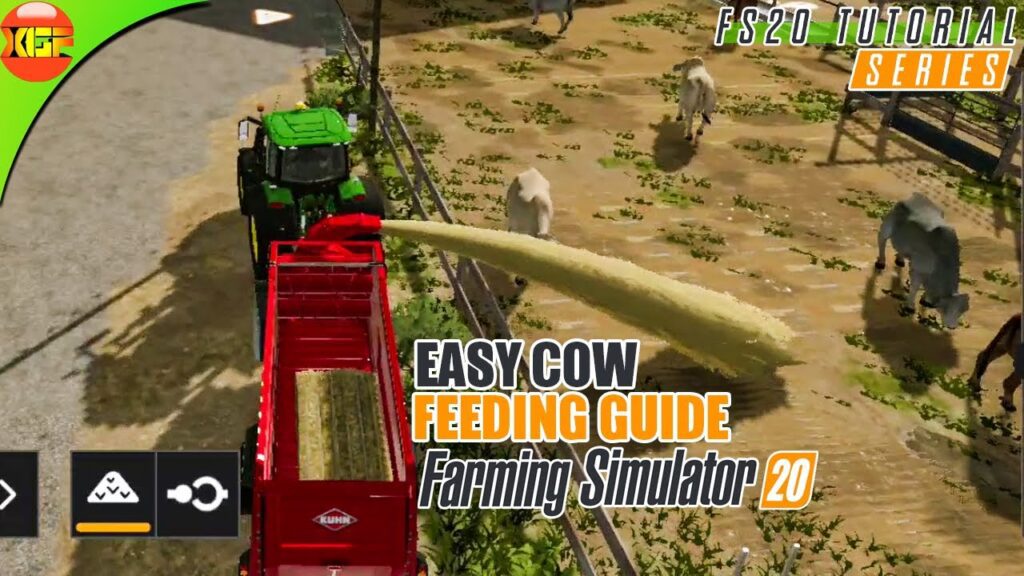Farming Simulator 20 is a popular game that simulates the full farming experience, where players can manage their farms, crops, and livestock to succeed. The game requires players to understand game controls, choose a farm, analyze the map, manage crops and livestock, invest in farming equipment, sell and trade crops and livestock, and maintain farm efficiency. Understanding the game controls and analyzing the map is crucial to know where to plant crops, locate animals, and deal with fieldwork. Additionally, managing crops and livestock, investing in farming equipment, and maintaining farm efficiency are essential aspects of the game to succeed.
The Ultimate Guide to Farming Simulator 20: Tips, Tricks & Gameplay
Farming Simulator 20 is an incredibly realistic farming simulation game that allows players to experience what it’s like to run their own farm. This popular game requires players to manage their farm, grow crops, and take care of livestock to succeed. However, starting out can be challenging, so to help, we have compiled the ultimate guide to Farming Simulator 20. Whether you’re a seasoned player or new to the game, these tips and tricks, and gameplay tips will help you achieve success in Farming Simulator 20.
Understanding the Game Controls
The first thing to do when starting Farming Simulator 20 is to learn the game’s controls. You should familiarize yourself with the functions of each button or key, which will help you perform tasks efficiently. Farming Simulator 20 is available on consoles, PC and mobile devices, so the controls might vary. However, some basic controls that you need to learn include:
- Left stick or arrow keys for movement
- Right stick or mouse for camera control
- A or X button for acceleration
- B or Circle button for braking, slowing down or reversing
- Y or Triangle button for getting in and out of vehicles or machines
Starting the Game: Choosing a Farm
When you start Farming Simulator 20, you can choose a new farm or continue a previously saved game. If you’re starting a new game, you get to choose the location and size of the farm you wish to manage. There are three different locations available: Felsbrunn, Ravenport, and Erlengrat. Each location has unique challenges and terrain, so choose the one that offers the kind of farming experience you’re looking for. For instance, Felsbrunn has flat terrain, so it’s easier to move around, while Erlegnat is hilly and muddy, making it more challenging.
Analysis of the Map
After choosing your farm, the next step is to look at the map layout. Understanding the map is essential in Farming Simulator 20, as it will help you know where to plant your crops, locate your animals and deal with any fieldwork. The map displays all available land areas, including the fields, forests, and animal pastures. It also shows other significant structures on the farm, such as animal shelters, silos, and storage sheds. Take time to study the map and plan how you want to use each area.
Managing Crops and Livestock
The core of Farming Simulator 20 is taking care of crops and livestock. To succeed in the game, you need to know the basics of managing these resources. As a farmer, you have to plant, harvest and sell crops. There are several types of crops available, including wheat, corn, canola, and soybean. Each crop type requires a different planting and harvesting schedule. Once you harvest your crops, store them in silos, and sell them to earn money.
In addition to crops, livestock is a significant source of revenue. As a farmer, you can raise different animals such as cows, pigs, and chickens. Keep in mind that each animal has unique needs, so you have to provide them with food, water, and shelter. Take care of them well, and they will produce milk, wool, eggs, and meat for sale.
Investing in Farming Equipment
As a farmer, you need the right equipment to manage crops and livestock successfully. In Farming Simulator 20, there is a wide variety of farming equipment available, including tractors, harvesters, seeders, and plows. However, the equipment comes at a cost, and as a beginner, it might be challenging to afford everything you need. Focus on buying essential equipment first, and as you earn more money, add new equipment to increase efficiency.
Selling and Trading Crops and Livestock
Selling your crops and livestock is how you earn money in Farming Simulator 20. Once you harvest your crops or raise your animals, you can sell them in the market or to other farmers. Different markets offer different prices, so it’s always a good idea to shop around for the best deals. Moreover, if you’re looking to expand your livestock, you can trade animals with other farmers to diversify your herd and breed new types of animals.
Maintaining Farm Efficiency
To succeed in Farming Simulator 20, you need to keep your farm running efficiently. Proper planning and maintenance are essential in keeping your farm productive. Take note of the season and the type of crops you’re planting to ensure maximum output. Always plan ahead and prioritize tasks to avoid running out of time. Lastly, maintain and repair your equipment regularly to minimize breakdowns and downtime.
Conclusion
Becoming a successful farmer in Farming Simulator 20 requires dedication, time management, and efficiency. By following the tips and tricks outlined in this guide, you’ll be well on your way to building your dream farm. Remember to enjoy the game along the way and have fun with the farming experience.
